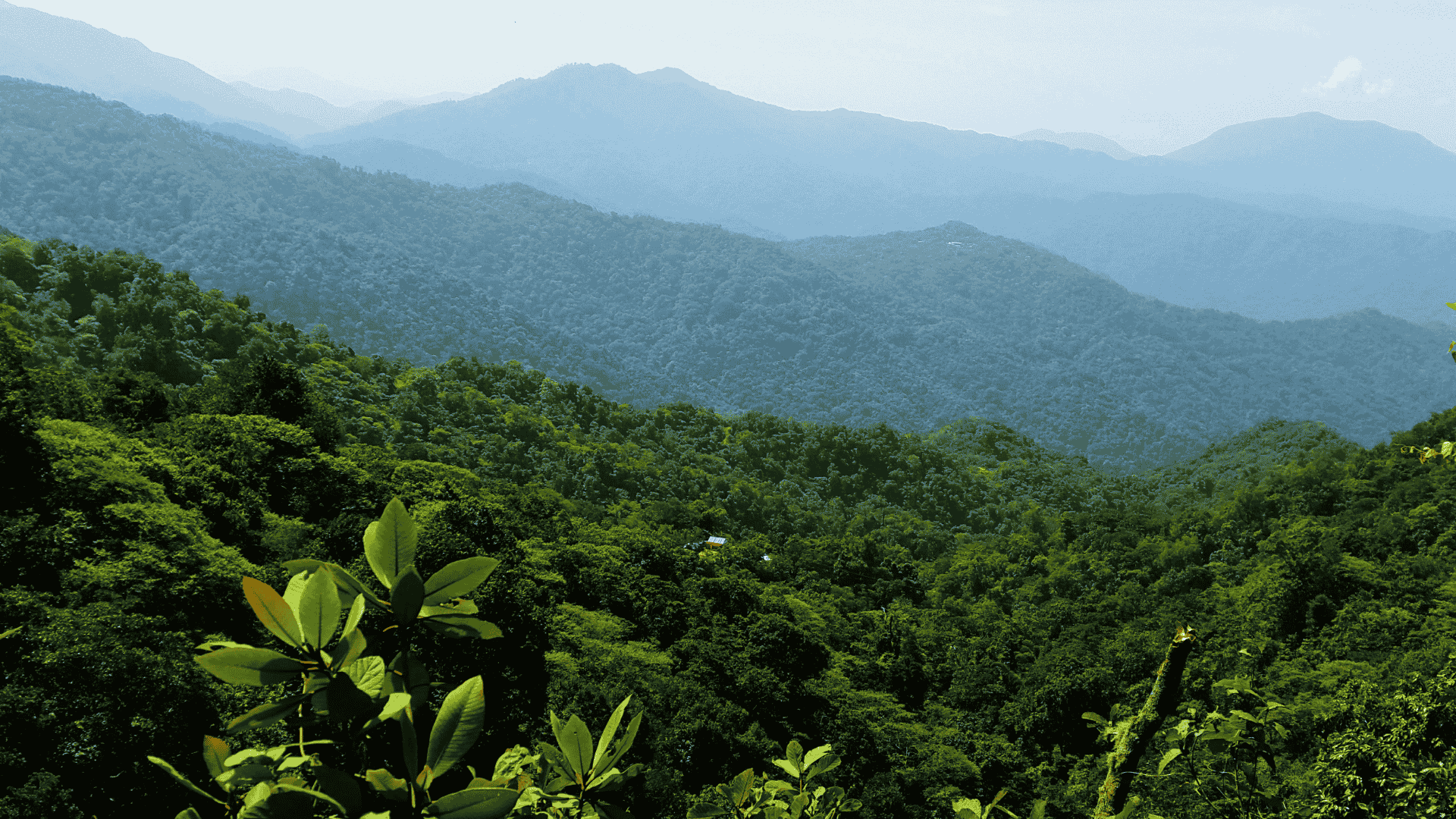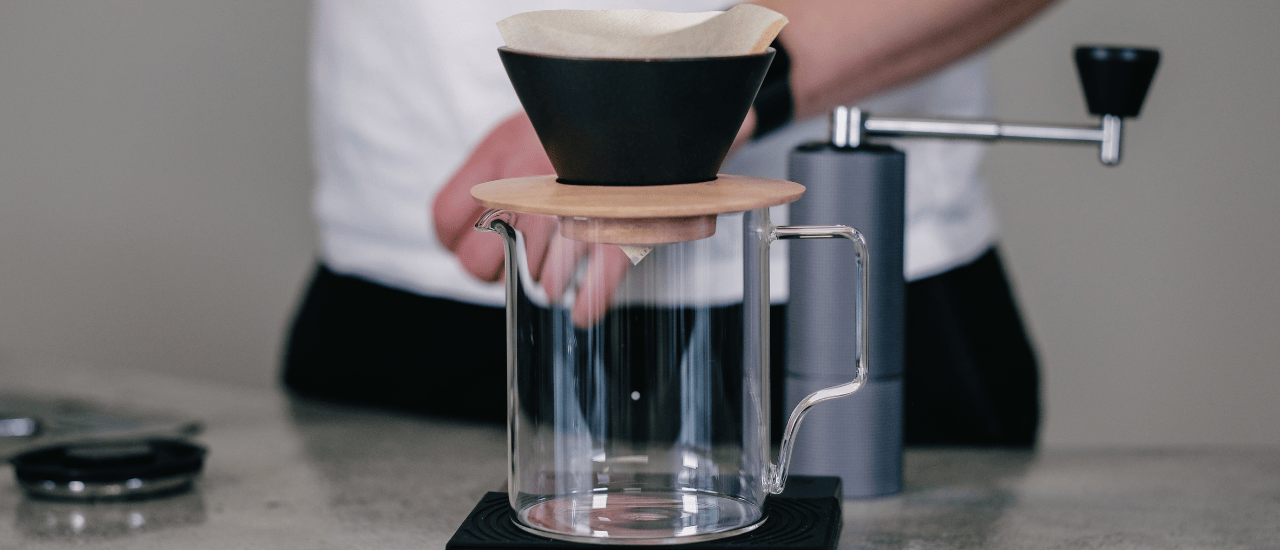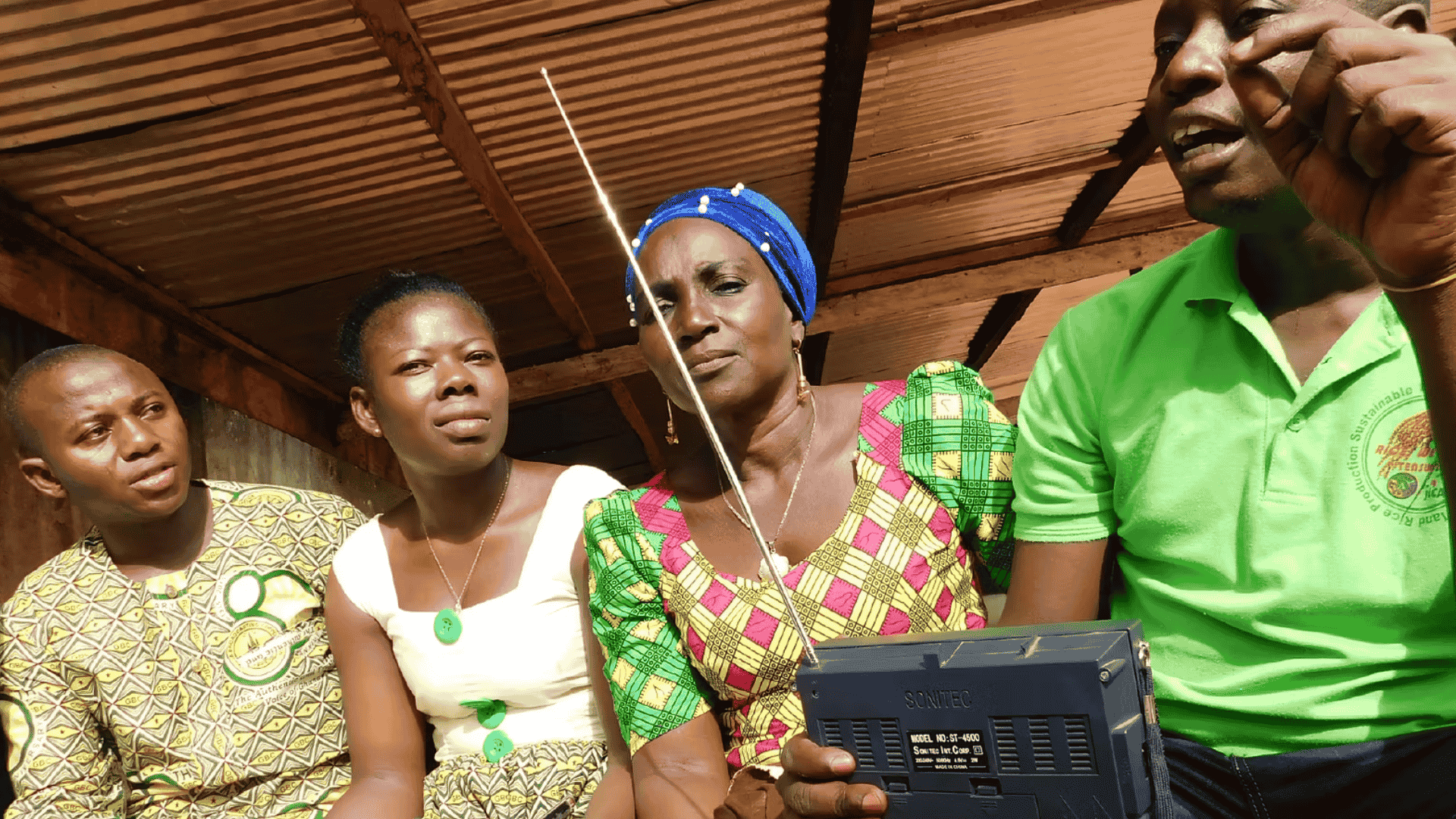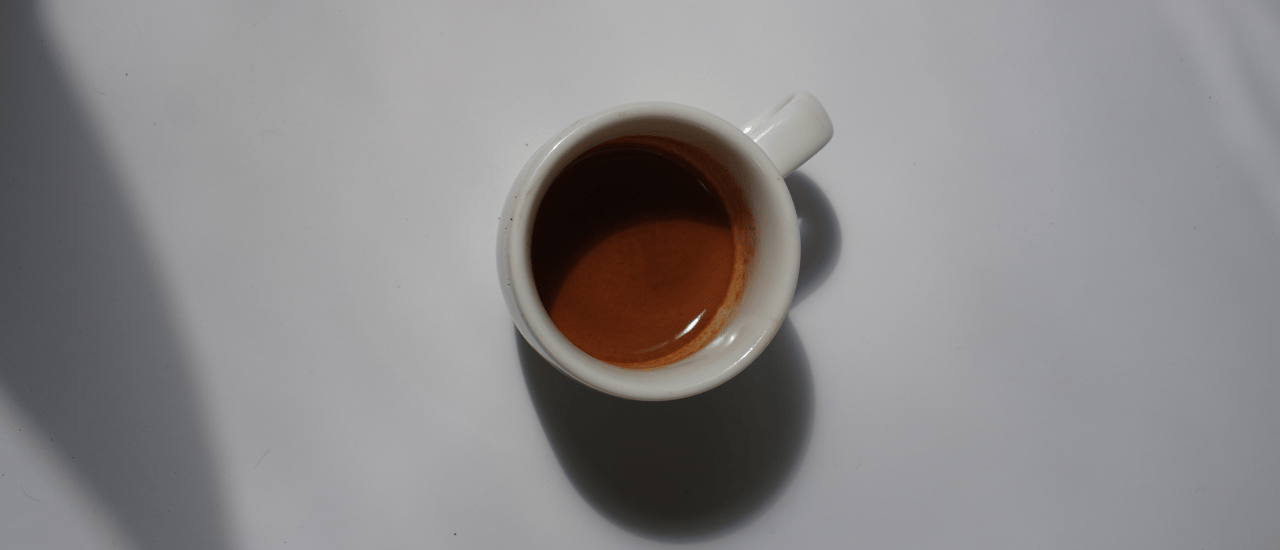Coffee Journal

what’s so special about specialty coffee?
If you’ve heard the term specialty coffee before, but aren't exactly sure what it means, you’re in the right place. Here we'll take a look at specialty coffee's origins, what defines it, and what really makes it. the origin of specialty coffee The term specialty coffee was first coined by Erna Knutsen in 1974 during an interview with Tea & Coffee Trade Journal. A pioneer in the coffee industry, Erna was a champion of small roasters and high-quality coffee at a time when large corporations dominated the market. She faced significant challenges in a male-dominated industry yet laid the foundations for what we understand specialty coffee to be today, which is coffee that is produced with care and excellence from seed to cup. Her lifelong work and dedication to coffee earned Erna the unofficial title, 'the Godmother of Specialty Coffee'. erna knutsen, the 'godmother of specialty coffee' defining specialty coffee At its core, specialty coffee is coffee that is scored 80 points or higher out of 100 by certified coffee tasters (Q Graders). However, the definition from the Specialty Coffee Association provides a more holistic view. They define specialty coffee as, "a coffee or coffee experience that is recognised for its distinctive attributes, resulting in a higher value within the marketplace." This reflects Head Roaster Niko Sunko's belief that specialty coffee is about more than a score. It's about the people who grow it and the processes that make it. Unlike commodity coffee (grown and traded in bulk with a focus on yield), specialty coffee is grown with care, generally harvested by hand, and processed with precision using techniques sometimes passed down for generations. coffee growing at altitude in mexico's union san pedro 5 things that make it special 1. it starts on the farm Specialty coffee begins with high-quality Arabica beans, grown at higher altitudes in ideal climates. Farmers focus on sustainable practices, soil health, and selective picking, choosing only the ripest cherries. 2. it’s processed with precision Once picked, the beans are carefully processed (washed, natural, or honey process) to bring out their natural sweetness and complexity. This step affects the final flavour just as much as the roast. 3. it’s traceable Most specialty coffee can tell you where it came from. Not just the country, but the region, the farm, even the lot. This transparency supports ethical sourcing and better relationships between roasters and producers. 4. it’s roasted for flavour Specialty coffee is lightly roasted in small batches to let the origin's characteristics shine through. This differs from a dark roast which can be used to mask flavours. 5. it’s brewed with care Whether you’re using a French press or a pour-over, brewing specialty coffee is about paying attention to variables. Your grind size, water temperature, and brewing time unlock the full flavour. coffee cherries drying on beds at enrique lopez's farm in mexico what does specialty coffee taste like? It depends. An Ethiopian coffee might taste like blueberries and tropical fruits. A Colombian might taste like peach and plum. Specialty coffee varies wildly. Part of the fun is discovering flavours you didn’t even know coffee could have. And even ordering from the same producer year after year and noticing the nuances between each harvest, similar to wine tasting . where do I start? You're in the right place. Bell Lane Coffee is a specialty coffee roaster and you can use our intuitive label design to find a coffee that's right for you at a glance. Whether it's espresso, filter, or coffee subscriptions, we've got you covered for specialty coffee. coffee cherries being "washed" at origin
Discover more
how to brew a great V60 at home (no experience needed)
So, you’ve decided to dive into the world of filter coffee. Great choice. Previously, we've looked at the differences between filter and espresso. In this post, we’re getting hands-on with one of the most popular and approachable filter methods out there. Although the V60 can look intimidating at first, with a little guidance anyone can brew a bright, clean, and delicious cup at home. No barista training needed. the iconic cone shape of a V60 what is a V60? The V60 is a cone-shaped dripper made by Hario, designed to sit on top of your cup or a server. You pop in a paper filter, add coffee grounds, and pour hot water over it in stages. Gravity does the rest. The result? A light, nuanced cup that highlights the character of the coffee. If you enjoy exploring flavour notes and prefer a smoother brew, this is for you. what you’ll need Before you get started, gather your equipment: V60 cone dripper matching filters freshly ground filter coffee grinder (burr grinder recommended) kettle, ideally gooseneck for better control (but a standard kettle is fine to start) scales (optional, but helps with consistency) timer or phone stopwatch your favourite mug or server scales give you precision with every brew grind size Grind size is very important for making a good V60 and your grinder will have a range of settings for V60 specifically. For example, the recommended V60 setting on a traditional Comandante grinder is 20-30 clicks. For this Timemore grinder, it's 10-13 clicks. At Bell Lane, we try to grind as fine as we possibly can. Once our brew becomes astringent or too dry, we know we've pushed it too far. From there, we usually bring it back a click or two. Check the recommended settings for your grinder and play with each point in the range (and beyond) to see which setting works best for you. coffee dose It's also important to think about both water volume and coffee dose. A good starting ratio is 16:1. That means for every 1g of coffee, use 16g (or 16ml) of water. So, for a 20g coffee, use 320ml of water. From there, you have a good base to experiment with the weight of coffee grounds and the volume of water. Adjust up or down depending on your preferences. water matters Use fresh water, ideally soft water, to avoid flavour loss. Although you'll see many recommendations for your water temperature to be around 92–96°C, at Bell Lane we brew just off the boil at 100°C. This is because our lighter roast profile for filter coffees allows for a boiling hot brew. variables, like water, influence your final cup step-by-step guide 1. rinse & preheat Place the filter paper into your V60 and rinse it with hot water. This removes any papery taste and preheats your dripper and mug or server. Discard the rinsed water. 2. add coffee grounds Place your V60 on the mug or server, add your coffee grounds, and gently shake to level the bed. 3. pour 1: the bloom Start your timer and pour just enough water to saturate all the grounds. About 30–50g. This allows the coffee to “bloom” as carbon dioxide is released, leading to better extraction. Wait for about 30–45 seconds. 3. pour 2: main pour(s) Continue pouring in a slow, circular, or spiral motion. Start from the centre, work your way out and back in. Always aim for the coffee grounds and avoid pouring directly onto the filter. You can do this in one or two pours until you reach your total water weight (250g). Aim to finish pouring by around 1:30–2:00 minutes. 4. let it drip Allow the water to drain completely. Your total brew time should be around 2:30–3:00 minutes. If it’s running too fast, your grind may be too coarse. If it goes too slow, your grind is probably too fine. 5. the stir Once your coffee is brewed, give it a quick swirl or a stir with a spoon. Why? When coffee is filter brewed, the heavier compounds and flavours sink to the bottom while the lighter aromas and flavours rise to the top. A quick swirl or stir will bring them all together for a more balanced cup. Then? Sit back, relax, and enjoy. swirl your fresh brew to integrate all the flavours pro tips for better V60 brews Don’t stress about perfection. Even small improvements (like a consistent grind) make a big difference. Taste and adjust. Each coffee is different. Experiment with the variables like grinder, grind size, water temperature, and water volume to fit the settings that you enjoy most. filter coffee Try different coffees to see what you like (and don't like). Our filter collection is a great place to start and if you'd like a new coffee delivered to your door every month, explore our filter subscriptions. Each one is carefully selected and freshly roasted by our Head Roaster, Niko Sunko.
Discover more
why giving a voice to coffee farmers matters
Coffee has always been about people, whether meeting for coffee or chatting over coffee. But for this special collaboration, we’re shining a light on the people behind coffee—the producers, farmers, and workers who make it all possible. voices that matter Farmers' Voice Radio exists to give a voice to these all-important people. An initiative of international non-profit the Lorna Young Foundation, Farmers' Voice Radio amplifies farmers' voices through locally-led radio programming—a widely accessible, low-cost medium that even farmers in the most remote locations can tune into. This work helps farming communities share knowledge, improve yields, adapt to climate change, and strengthen local networks—all vital to keep farmers and producers at the forefront of sustainable farming. This benefits farmers, roasters, and ultimately everyone who enjoys their cup of coffee. coffee seedlings being unpacked in peru (photo credit: Inchahuasi Valley Cooperative, Cusco, Peru) the benefits The large-scale impact of Farmers' Voice Radio is clear to the coffee industry when you pick through their incredible work to date, both through radio programmes reaching thousands of farmers delivered in partnership with local organisations, and through training agricultural officers on the Farmers' Voice Radio approach in their online Academy. 70,000 disease-resistant coffee seedlings planted by smallholder coffee farmers in Nyeri, Kenya Widespread adoption of stumping practices to rejuvenate older, low-yielding coffee trees by farmers on Mount Elgon, Uganda. You can hear directly from coffee farmers Esther and Agnes about this experience here. 50 individuals representing 24 coffee cooperatives from Peru, Colombia, Mexico, Honduras and Nicaragua with the skills and tools to deliver Farmers' Voice Radio programmes to their total membership of over 20,000 farmers Brighton Coffee Festival presents a unique opportunity to benefit this collective with a special collaborative coffee. the right coffee With such a worthy cause, Bell Lane Coffee is proud to support Farmers' Voice Radio with a special collaboration coffee for Brighton Coffee Festival. We’ve chosen a coffee from La Morena, an all-female coffee collective based in Guatemala. Led by Maria Renee Morales, La Morena is a shining example of female coffee producers working together while sharing knowledge and resources to build a stronger, more resilient community. At Brighton Coffee Festival, this coffee provides an opportunity to directly support farming communities. 25% of every sale will go directly to Farmers' Voice Radio, helping them continue their vital work across the globe. gail henshall of bell lane coffee at dublin coffee festival shared values Bell Lane Coffee and Farmers' Voice Radio first connected at Dublin Coffee Festival. There, Hannah Davis of Farmers' Voice Radio met Bell Lane’s Head of Sales, Gail Henshall, where the idea for this collaboration was born. "This is a natural fit for Bell Lane. It ties in with our B Corp values to benefit people and the planet, but more than that it's a chance to shine a light on, and raise funds for, some truly impactful work being done at origin," says Gail. "Coffee connects people everywhere," says Hannah. "This partnership with Bell Lane is a brilliant way to show how these connections extend from the coffee you drink all the way back to the producer who grows and cares for it." further support To learn more about Farmers' Voice Radio’s mission, and to support this amazing organisation directly, please visit them here. You can learn more on their latest projects and how their work directly benefits farmers on the ground. saudatu, farmers' voice radio listener and shea nut collector from ghana (photo credit: lorna young foundation)
Discover more
understanding washed coffees (and why we love them)
When it comes to discovering new coffees, processing method is one of the most powerful (and underrated) keys to flavour. Among all the options, we keep coming back to washed coffees for their clarity, precision, and transparent expression of origin. what is a washed coffee? Washed coffee, sometimes referred to as wet processed, refers to a post-harvest method where the coffee cherry’s pulp and mucilage are removed before the beans are dried. After picking, the cherries are pulped mechanically, and the sticky mucilage layer is broken down through fermentation in water tanks. Finally, the clean beans are washed again before drying. This process is designed to highlight the coffee's inherent qualities, bringing out the best from the varietal, the terroir, and the work of the farmer (as opposed to the influence of the coffee fruit’s sugars). a pulping machine at the izuba washing station, burundi how you know a washed bean If you've ever looked closely at a raw (green) washed coffee bean, you might notice a small white line (often called the "silver skin" or "parchment scar") running down the centre cut. While all beans technically have this, it tends to appear cleaner and more pronounced in washed coffees because of the thorough removal of fruit residues. After roasting, washed beans also tend to look slightly lighter and more uniform than naturally processed beans (which can appear patchier or more uneven due to the fruit sugars caramelising differently). washed coffee beans being dried in the sun on raised beds why do we love washed coffee? At Bell Lane, our Head Roaster Niko is drawn to washed coffees for their clarity and honest expression of origin. A well-executed washed coffee allows us to showcase the true character of a farm or micro-lot without distraction. We often describe these coffees as "clean," "bright," and "structured." Think well-defined acidity, layered florals, and transparent sweetness—qualities prized by both roasters and filter-focused coffee drinkers. In sourcing, we look for washed lots that really show off their origin. A washed Ethiopian might deliver jasmine and stone fruit notes with tea-like delicacy. A washed Kenyan might burst with blackcurrant and juicy citrus. By celebrating these profiles, we can support producers who are meticulous about picking and processing, rewarding quality at every step of production. explore our washed coffees If you're curious to dive deeper into the purest expressions of terroir and varietal, our washed coffee selection is a great place to start (or revisit). washed coffee beans with distinctive parchment scar at the centre of the bean Stay up to date on all things coffee by signing up to our newsletter.
Discover more
espresso vs. filter: what’s the difference and why does it matter?
If you’re just getting into coffee, you’ve probably heard people talk about filter and espresso. But what exactly sets them apart? And more importantly, which one is right for you? what is espresso? Espresso is coffee that is brewed under high pressure. In fact, the word espresso comes from the Italian esprimere, which means “to press out”. And that’s exactly what’s happening. Hot water is being pressed out, or forced through, very finely ground coffee at around 9 bars of pressure. This results in a small, concentrated shot of coffee usually delivered in around 25–30 seconds. Espresso itself can be brewed on a variety of different machines. It's the one you'll see in your local coffee shop, but there are also a variety of espresso machines which are made for home use. Espresso is intense, rich, and forms the base for drinks like flat whites, cappuccinos, and Americanos. ideal for: quick, concentrated coffee and milk based drinks one of the many types of home espresso machine what is filter coffee? Filter, also known as pour-over, gets its name from the filter that the coffee passes through. While espresso uses pressure, filter methods usually involve gravity doing the work. Water slowly filters through medium-ground coffee and a paper or metal filter. Brewing takes longer than espresso (typically 2–4 minutes), but the result is a cleaner, more nuanced, and often more aromatic cup. Think V60, Chemex, or AeroPress. These all fall under the filter umbrella. ideal for: considered, meditative coffee prep an example home filter setup what about moka? Moka pots fall somewhere in between. Sometimes referred to as stovetop espresso makers, Moka pots brew coffee by forcing steam-pressured water up through coffee grounds. However, because the pressure is lower than espresso, the resulting coffee is not as strong or concentrated as a true espresso. That said, it is stronger and more concentrated than filter. Moka is a great in-between option. Perfect if you want something bold with minimal set up. ideal for: espresso-like coffee with minimal equipment coffee pressing up and out through a moka pot what about aeropress? The AeroPress is a portable brewer that uses gentle pressure to create a cup that also sits somewhere between filter and espresso. While it uses a filter (paper or metal), it can make espresso-style coffee. It's smooth, versatile, and travel-friendly. One great advantage of an AeroPress is that can be used to brew coffee that has been roasted for espresso or filter. ideal for: versatile, on-the-go brewing aeropress why does all of this matter? Knowing the difference between coffee types helps you choose the right coffee and equipment for your preferred taste, timing, and lifestyle. If you want a quick, intense cup with crema and punch, then espresso is for you. If you prefer a cleaner coffee and you have the time to make it, make filter your go-to. If you fall somewhere in between, it's worth exploring both moka pot and Aeropress. summary Choosing the right method for you isn’t just about taste, it’s also about the kind of ritual or routine you want to create for yourself. Over time, you might even find that you need a mix of both—espresso during the week and more meditative filter at the weekend. If and when you perfect your routine, you can always save with a subscription at Bell Lane. We offer subscriptions for both espresso and filter drinkers, delivered to your door every month. Stay up to date on all things coffee by signing up to our newsletter.
Discover more
4 easy iced coffee recipes to cool down with
When the heat is on, nothing beats an iced coffee. These four summer-ready recipes are easy to make (and delicious to drink). There's something for you whether you prefer espresso, filter, and even if you don't have the equipment for either. 1. iced americano A classic. what you’ll need: ice, cold water, and 1 shot of espresso how to make: fill your glass with ice add cold water (until about two-thirds full) pour a fresh shot of espresso over the top That’s it! We use Ubuntu (espresso) as our base in the roastery. It's light flavour profile pairs perfectly with ice. 2. iced latte Incredibly refreshing. what you’ll need: ice, cold milk (any kind you like), and 1 shot of espresso how to make: fill your glass with ice add milk (until about two-thirds full) pour a fresh shot of espresso over the top rest for at least 30 seconds before drinking Allowing time between preparation and drinking gives the crema a chance to settle and allows the flavours to meld for a rich, layered finish. We love House (espresso) for our iced lattes because it's roasted to pair well with milk. 3. iced filter brew Full of flavour. what you’ll need: ice and freshly brewed coffee how to make: brew your filter coffee in advance (V60, Chemex, batch brew, or however you like) let it cool to room temperature (or cooler) fill a glass with ice pour your filter coffee on top Simple, clean, and a great way to explore origin characteristics in warm weather. We like Javier Rubio (filter), but any filter coffee will work depending on your preferences. 4. cold brew Make ahead of time.what you’ll need: ice, cold water, and coarsely ground coffee how to make: steep 60g of coffee per litre of cold water in the fridge for 16–18 hours strain pour over ice dilute with water (optional) We use Bold (espresso) for cold brew as the chocolatey notes form the ideal base for this drink. Why not try one at home or in the office when the weather is nice? Grab your coffee here and tag us in your iced creations. We'd love to see what you're brewing.
Discover more